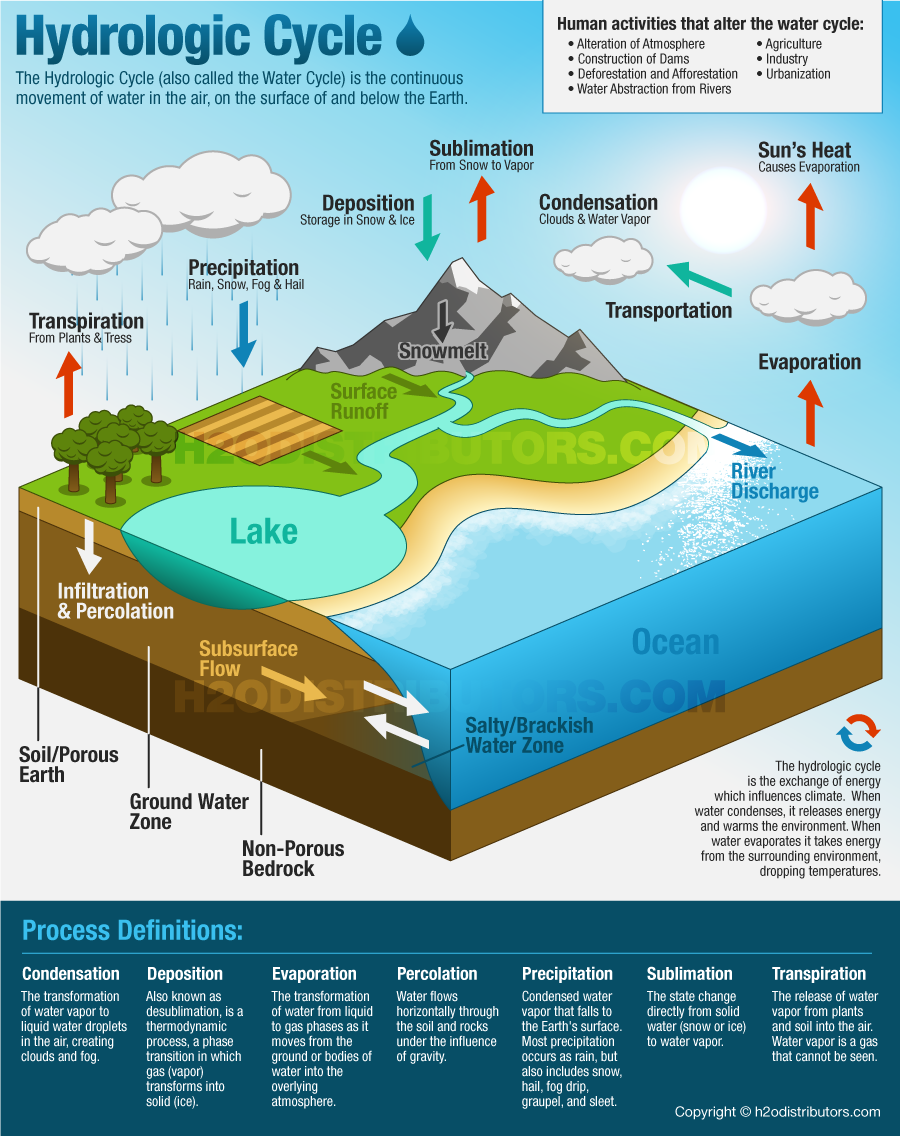SURAH AL MURSALAAT (THE EMMISSARIES): AYAT 27 (QURAN 77:27)

The Earth’s surface is predominantly covered by water, but a stark contrast exists between saltwater and freshwater. Saltwater, found in oceans and seas, constitutes approximately 97.5% of the Earth’s water supply. This saline water is rich in dissolved salts and minerals, making it unsuitable for most terrestrial life forms and human consumption without extensive desalination processes. In contrast, freshwater accounts for a mere 2.5% of the global water resources, yet it is essential for drinking, agriculture, and ecosystems. Most freshwater is trapped in glaciers and ice caps or located in underground aquifers, leaving only about 0.3% readily available in lakes, rivers, and reservoirs. Despite its scarcity, freshwater supports a vast array of life on Earth, maintaining the delicate balance of biodiversity and providing for the needs of humans and wildlife alike.
High up in the mountain ranges, where the air is crisp and the vistas endless, lies a hidden gem: fresh mountain water. It has no salinity and is essentially filtered by nature. Mountain water is often referred to as fresh water because it originates from precipitation such as rain and snow, which are naturally free from salts and other impurities typically found in seawater. As this water travels through the layers of soil and rock, it undergoes natural filtration, further ensuring its purity. The United States Geological Survey (USGS) explains that “freshwater is generally characterized by having low concentrations of dissolved salts and other total dissolved solids” and can be found in rivers, lakes, streams, and underground aquifers—many of which are sourced from mountainous regions.
This water, often described as the purest form of nature’s elixir, begins its journey to the mountaintop with a natural marvel: the hydrologic cycle.
Here’s a step-by-step overview of how this journey unfolds:
- Evaporation: The process begins with the sun’s energy heating the surface of the ocean, causing water to evaporate and rise into the atmosphere as water vapor.
- Condensation: As the water vapor ascends, it cools and condenses into tiny droplets, forming clouds. This transformation from gas to liquid is known as condensation.
- Transportation: Atmospheric currents carry these clouds over great distances, including towards mountainous regions. This transportation phase can span vast areas, driven by wind patterns and weather systems.
- Precipitation: When the clouds encounter cooler air at higher altitudes, such as those found near mountain ranges, the water droplets merge and grow larger. Eventually, they fall to the earth as precipitation—rain, snow, sleet, or hail.
- Infiltration and Runoff: Upon reaching the ground, some of this water infiltrates the soil, percolating through layers of rock and earth. This infiltration process filters the water naturally. The remaining water flows over the land’s surface as runoff, contributing to streams and rivers that often originate in mountainous areas.
- Snow and Ice Storage: In colder climates, precipitation may fall as snow and accumulate on mountain peaks. This snow can remain for extended periods, forming glaciers or ice caps. Over time, the snow and ice melt, contributing to the mountain’s freshwater supply.
- Natural Springs: Water that has infiltrated the ground may re-emerge at the surface through natural springs, often at higher elevations. These springs feed into mountain streams and rivers, maintaining a constant flow of fresh water.

This cyclical process that has only recently been understood by modern scientists – ensures that mountain regions receive a continuous supply of fresh water, sustaining the unique ecosystems and communities that thrive at these elevations plus providing freshwater sources to the plains below. The Quran 1400 years ago stated in Surah Mursalat (Quran 77:27) in a connected singular sentence that God created lofty mountains and has given you fresh water to drink. This highlights both the fact that mountains are associated with fresh water only (no salt minerals are evaporated / transported / precipitated) and also that mountain water is considered the biggest resource for fresh water on Earth, often referred to as the “water towers of the world” as most major rivers originate in mountainous regions, providing freshwater to a significant portion of the global population.
And set on it lofty mountains, and given you freshwater to drink?
٢٧ وَجَعَلْنَا فِيهَا رَوَاسِيَ شَامِخَاتٍ وَأَسْقَيْنَاكُمْ مَاءً فُرَاتًا
In Surah Fussilat (Quran41:53) – Allah (swt) says: We will show them Our signs in the universe and within themselves until it becomes clear to them that this ˹Quran˺ is the truth. Is it not enough that your Lord is a Witness over all things?

